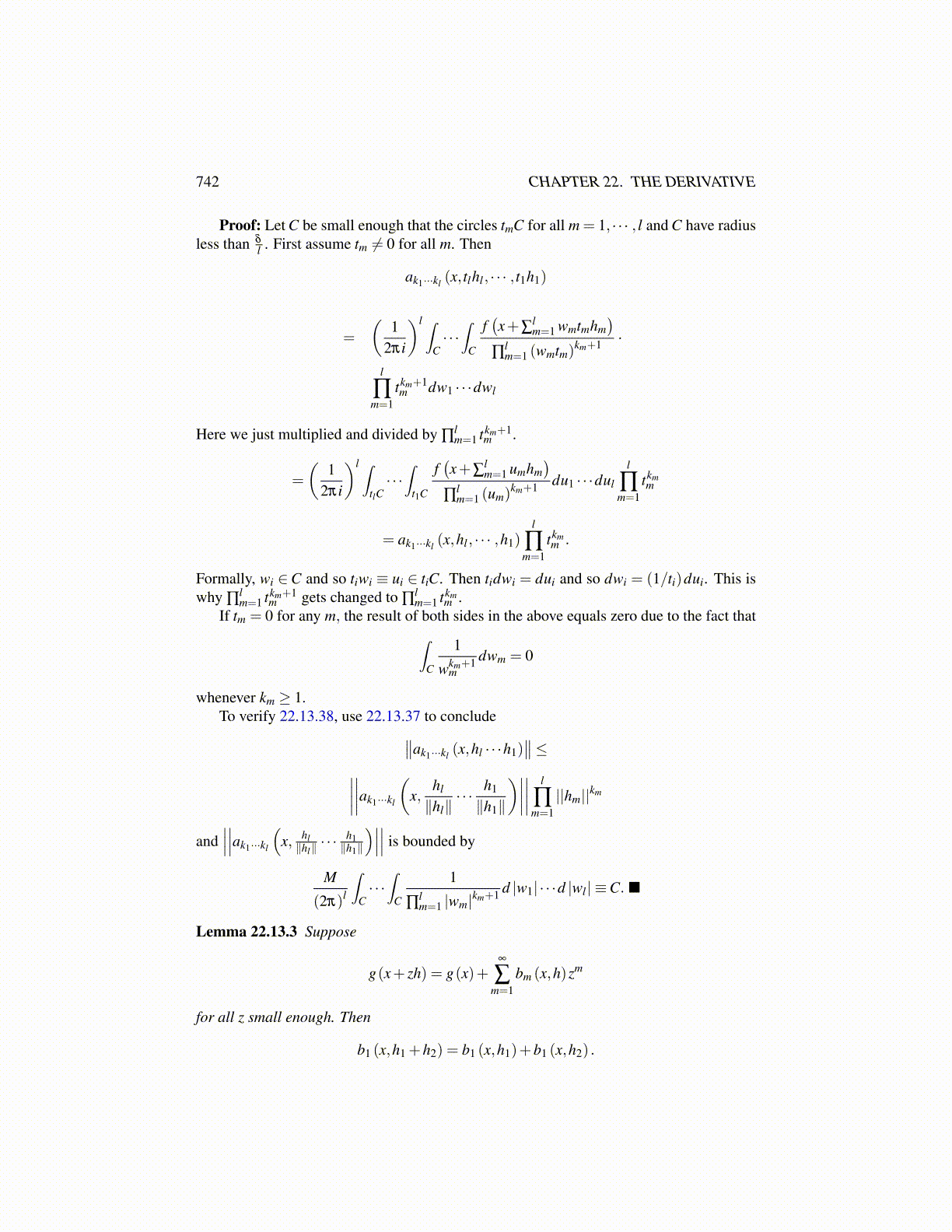
742 CHAPTER 22. THE DERIVATIVE
Proof: Let C be small enough that the circles tmC for all m = 1, · · · , l and C have radiusless than δ
l . First assume tm ̸= 0 for all m. Then
ak1···kl (x, tlhl , · · · , t1h1)
=
(1
2πi
)l ∫C· · ·∫
C
f(x+∑
lm=1 wmtmhm
)∏
lm=1 (wmtm)
km+1 ·
l
∏m=1
tkm+1m dw1 · · ·dwl
Here we just multiplied and divided by ∏lm=1 tkm+1
m .
=
(1
2πi
)l ∫tlC· · ·∫
t1C
f(x+∑
lm=1 umhm
)∏
lm=1 (um)
km+1 du1 · · ·dul
l
∏m=1
tkmm
= ak1···kl (x,hl , · · · ,h1)l
∏m=1
tkmm .
Formally, wi ∈C and so tiwi ≡ ui ∈ tiC. Then tidwi = dui and so dwi = (1/ti)dui. This iswhy ∏
lm=1 tkm+1
m gets changed to ∏lm=1 tkm
m .If tm = 0 for any m, the result of both sides in the above equals zero due to the fact that∫
C
1
wkm+1m
dwm = 0
whenever km ≥ 1.To verify 22.13.38, use 22.13.37 to conclude∥∥ak1···kl (x,hl · · ·h1)
∥∥≤∣∣∣∣∣∣∣∣ak1···kl
(x,
hl
∥hl∥· · · h1
∥h1∥
)∣∣∣∣∣∣∣∣ l
∏m=1||hm||km
and∣∣∣∣∣∣ak1···kl
(x, hl∥hl∥· · · h1∥h1∥
)∣∣∣∣∣∣ is bounded by
M
(2π)l
∫C· · ·∫
C
1
∏lm=1 |wm|km+1 d |w1| · · ·d |wl | ≡C.
Lemma 22.13.3 Suppose
g(x+ zh) = g(x)+∞
∑m=1
bm (x,h)zm
for all z small enough. Then
b1 (x,h1 +h2) = b1 (x,h1)+b1 (x,h2) .